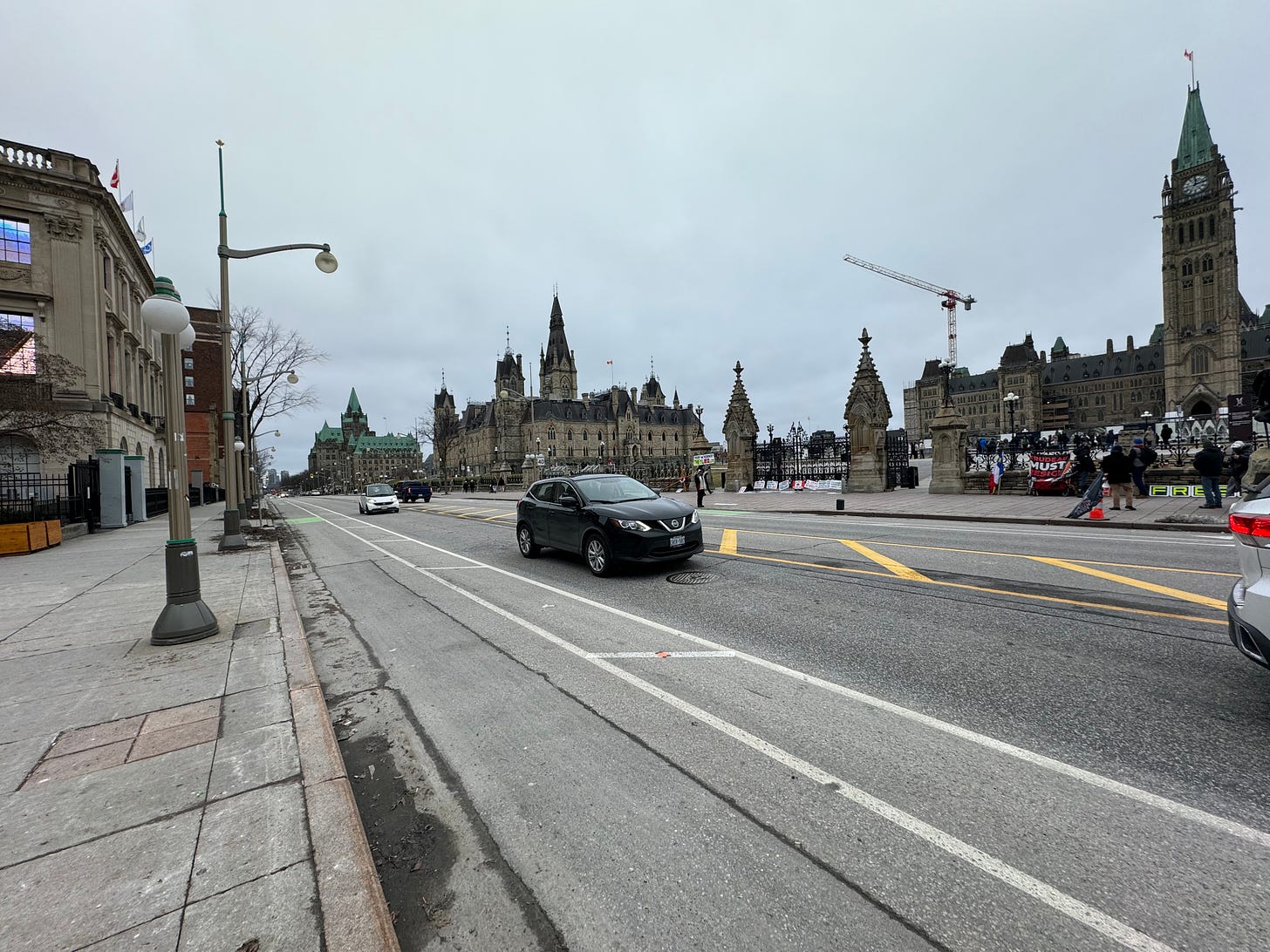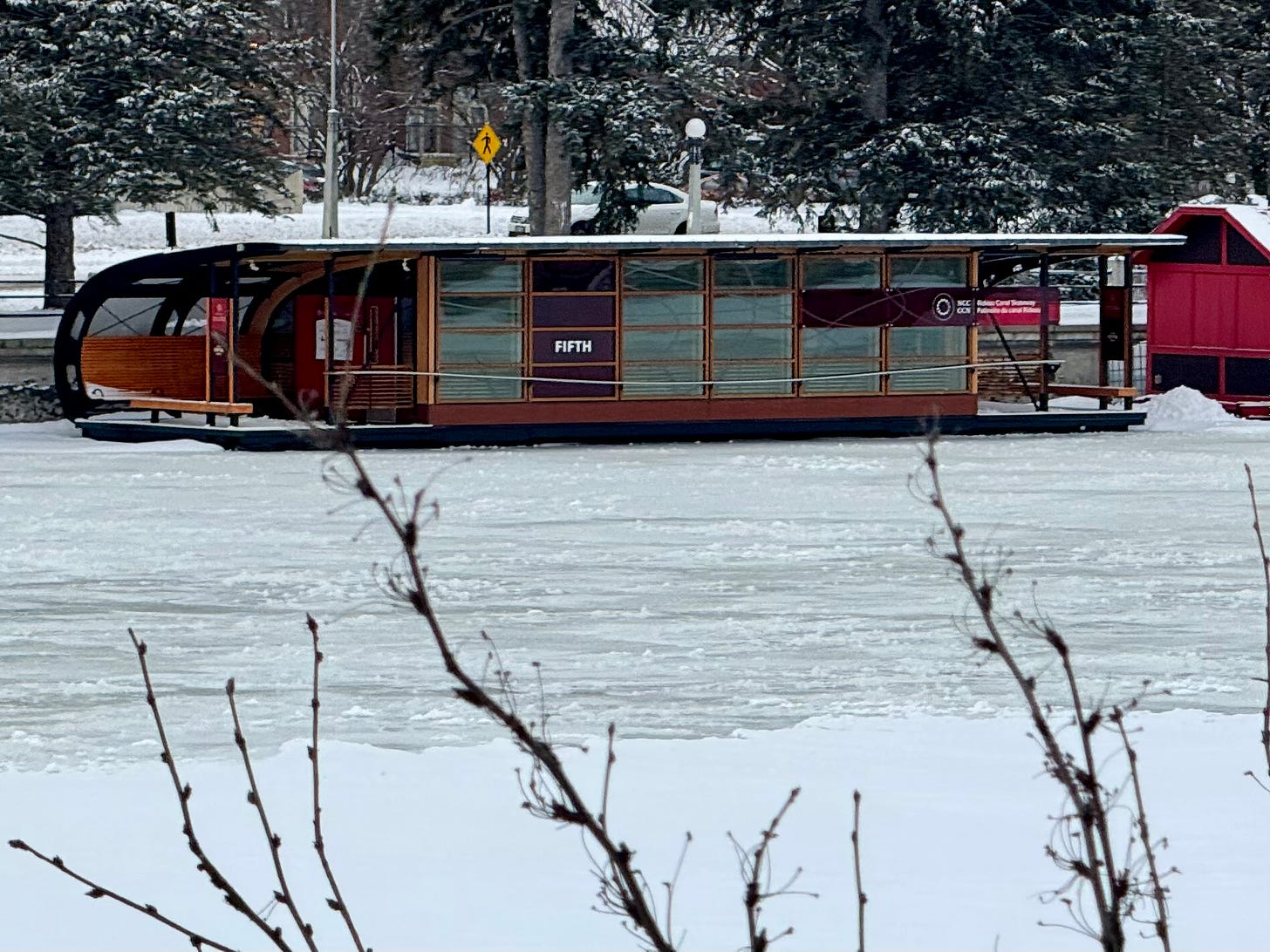Fix Downtown 3: To Attract Visitors, Make Lots of Small Bets Rather than One Big Wager, Except ...
When another level of government is paying for it, like the opportunity for Ottawa with Wellington Street.
This is the third in a series of common sense solutions for fixing downtowns.
People, people, people
We’ve talked previously about how downtown revitalization should be about 3 priorities: more people living downtown, more people working downtown, and more people visiting downtown. Let’s talk about the third of those priorities — getting more people, locals and tourists alike, to visit downtown.
Lots of small bets
It’s hard to know for sure what a city should do to get more people visiting a downtown. What works in one city may fail elsewhere.
Local residents and businesses are often best placed to figure out what could work to make downtown a destination.
Since local government has limited resources to spend on attractions that might get visitors downtown, cities should experiment with providing modest support to a number of different — ideally community-led — small initiatives, to see what works and what could be scaled up.
Trying to anchor downtown revitalization around a single large attraction is a big risk. Investments can quickly run to the tens or hundreds of millions of dollars. And that single large attraction might work — or it might fail miserably.
One mega-project is too much of a gamble for a city. Success is more likely with lots of small bets on community-led initiatives focused on attracting people.
Unless
There is one exception — when someone else is paying.
That someone else is typically a higher level of government which may have a specific reason for improving the downtown.
If a higher level of government is willing to invest in a major attraction, then cities can have it all. Let the federal or provincial government build something big. The city can focus its own resources on smaller projects.
We are seeing this potential play out in the City of Ottawa right now with Wellington Street. This is touched on in a recent Ottawa Citizen op-ed, and expanded upon below.
A new Wellington St …
Wellington Street is one of the most important streets in the country. It is home to Parliament. But it was also ground zero for the illegal occupation of downtown Ottawa in 2022.
The federal government is rightly fearful of their inability to protect Parliament when the road is under City of Ottawa control and open to private vehicles. The threat of a vehicular attack on Canada’s most important national institution is a real risk.
… could anchor downtown Ottawa revitalization
If Wellington Street were closed to cars, it could be reimagined as a pedestrianized area. And if done right, it could create one of the country’s top tourist destinations.
To meet the federal government’s security concerns, the City of Ottawa would have to transfer the street to the federal government. Accordingly, the federal government would own Wellington and pay for all upgrades to the site.
A smart City leadership would get ahead of the federal government and define the terms under which a transfer could take place. Suggested terms are outlined below, and would all fall under the guiding principle that the street be transformed into a new major attraction to anchor downtown revitalization.
A place for people
A vehicle-free Wellington would allow us to create a new people-focused public space that could bring thousands of daily visitors to Wellington Street throughout the year. It would also provide Canadians with a safe space for lawful protests and demonstrations, as is entirely appropriate at the heart of our democracy. The sketch at the top of this article shows what that could look like.
Imagine a pedestrianized street in front of Parliament, with interlocked brick, trees and vegetation. Imagine the sort of place that draws people organically with its beauty, as, for example, how Paris is currently overhauling the Champs Elysées. Now imagine if that street included a section designed for play. Street hockey, basketball nets and even dance floors in the summer, and with skating in the winter.
An accessible place for people, designed around public input and reliant upon community-led initiatives, could be the first element in creating a vibrant and welcoming year-round destination.
Tell the story of Canada
A redesigned Wellington could use its open spaces to tell the story of Canada, for locals and tourists alike, in an engaging, interactive and entertaining way.
In 2024, telling a story begins with social media. Wellington Street could provide opportunities for Instagrammable moments – for example, through a large Canada sign. Wellington could also have giant maps of Canada and the world embedded in the pedestrianized surface.
Telling the story of Canada could also include street-level installations recounting the history and highlighting the art of First Nations, of our constitution, of our provinces and territories, and of the wartime sacrifices of Canadians. Those stories could be told through multimedia displays, sound-and-light shows and human interpreters. The story of Canada could be told along a yellow pathway of the Trans Canada Trail rerouted onto Wellington Street.
An international design contest could be held to create a world class “storytelling experience” – aiming to put Wellington Street in the same league as other outstanding historical urban walks, such as Edinburgh’s Royal Mile, Barcelona’s La Rambla or Boston’s Freedom Trail.
Bring in markets and the arts
Effective public spaces have things to do. For Wellington Street, that would include markets, artists and cultural events.
A marketplace could offer Canadian products and specialties, and could include a space for new artists from across the country to display their work on a rotating basis.
Wellington could host one or two small stages, for use by local and visiting musicians, dancers, magicians or other performers.
Wellington could additionally amplify existing festivals in the national capital region. For example, large snow or ice sculptures could be built during Winterlude. Wellington Street could also extend the Gatineau Park’s Fall Rhapsody, the Tulip Festival and those festivals happening on Sparks Street.
Functionality now and into the future
Public spaces need to get the basics right. Food, water, shelter, washrooms. We could start by reusing the much loved Rideau Canal Skateway huts along Wellington Street as a place to rest and get out of the elements.
Security measures to protect the Parliamentary District could be done discretely.
Any redesign of Wellington should also allow for a potential inter-provincial tram. That project has been in the works for many years, and hit some important milestones late last year. The tram looks likely to gain further momentum in 2024.
A rare opportunity
Wellington Street is one of those unusual situations where a city, in this case Ottawa, can lean on a higher level of government to create something magnificent, which could serve as an anchor for downtown revitalization.
Some — but not many — cities get these opportunities. For those cities that do, run with it and get out early to set the terms of engagement.
For those cities that do not get the opportunity to piggy back on someone else’s resources, it’s not wise to try to create your own anchor investment. It’s a lot of money that a municipal tax base will find hard to support, and which could end up going nowhere.
Don’t put all your eggs in one basket. Lots of small bets on community-led initiatives would have a higher likely of a positive outcome.












Sparks Street was supposed to play this role. I think applying these good ideas to revitalize Sparks Street makes more sense. Agree with Jane that the market which was wonderful has now failed. And until we bring it back to its former glory having the Parliamentary Precinct can't work as well as it could.
What a great article full of great ideas. I'd love to see a vibrant Wellington Street as imagined here.